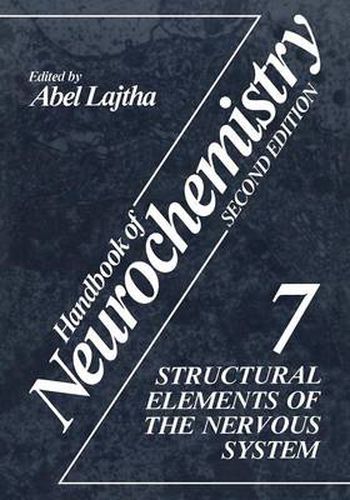Readings Newsletter
Become a Readings Member to make your shopping experience even easier.
Sign in or sign up for free!
You’re not far away from qualifying for FREE standard shipping within Australia
You’ve qualified for FREE standard shipping within Australia
The cart is loading…






This title is printed to order. This book may have been self-published. If so, we cannot guarantee the quality of the content. In the main most books will have gone through the editing process however some may not. We therefore suggest that you be aware of this before ordering this book. If in doubt check either the author or publisher’s details as we are unable to accept any returns unless they are faulty. Please contact us if you have any questions.
Neurochemistry, having the objective of elucidating biochemical processes subserving nervous activity, emerged as an application of chemistry to the of neurobiological problems as a post-World War II phenomenon. investigation However, only in the last 40 years has the chemical community recognized neurochemistry as a distinct, if hybrid, discipline. During this period great strides have been made. However, recently neurochemistry, along with neu rophysiology, neuropharmacology, neuroanatomy, and the behavioral sci ences, has emerged to form neuroscience, a new community of scientists with its own national society, journals, and meetings. Actually, this recently formed hybrid, neuroscience, is in the process of merging with another well-established discipline, molecular genetics (frequently called molecular biology, and itself a hybrid), which appears to have sufficient hybrid vigor to form yet a new community of scientists, which, for want of a more imaginative term, has been called molecular genetic neuroscience. Clearly, advantages resulting from such mergers or hybridizations accrue not only from the merging discipline (neurochemistry in this case) to the new community (molecular genetic neuroscience), but also in the reverse direction. This Foreword will be concerned primarily with examples of this latter process.
$9.00 standard shipping within Australia
FREE standard shipping within Australia for orders over $100.00
Express & International shipping calculated at checkout
This title is printed to order. This book may have been self-published. If so, we cannot guarantee the quality of the content. In the main most books will have gone through the editing process however some may not. We therefore suggest that you be aware of this before ordering this book. If in doubt check either the author or publisher’s details as we are unable to accept any returns unless they are faulty. Please contact us if you have any questions.
Neurochemistry, having the objective of elucidating biochemical processes subserving nervous activity, emerged as an application of chemistry to the of neurobiological problems as a post-World War II phenomenon. investigation However, only in the last 40 years has the chemical community recognized neurochemistry as a distinct, if hybrid, discipline. During this period great strides have been made. However, recently neurochemistry, along with neu rophysiology, neuropharmacology, neuroanatomy, and the behavioral sci ences, has emerged to form neuroscience, a new community of scientists with its own national society, journals, and meetings. Actually, this recently formed hybrid, neuroscience, is in the process of merging with another well-established discipline, molecular genetics (frequently called molecular biology, and itself a hybrid), which appears to have sufficient hybrid vigor to form yet a new community of scientists, which, for want of a more imaginative term, has been called molecular genetic neuroscience. Clearly, advantages resulting from such mergers or hybridizations accrue not only from the merging discipline (neurochemistry in this case) to the new community (molecular genetic neuroscience), but also in the reverse direction. This Foreword will be concerned primarily with examples of this latter process.